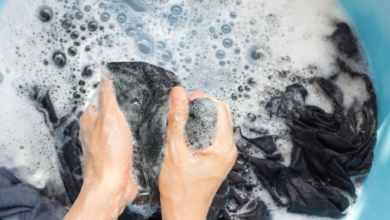The Best Ways To Make Pottery Workshop A Positive Experience

Creating a pottery workshop with your friends or family can be a great way to spend time together. However, if you or your group isn’t an experienced potter, it can also be difficult to have a productive time in this hobby. In this blog post, learn how to make your pottery experience more enjoyable and successful by following these nine simple steps.
What are some tips for making a pottery workshop a positive experience?
Some tips for making a pottery workshop a positive experience:
1. Establish clear expectations from the beginning. Be transparent about what you’re willing to do and what is required of participants. Everyone should know what to expect before arriving at the workshop.
2. Make sure all materials are properly labeled and stored in a safe place. This will help avoid any potential mishaps while working.
3. Create an environment that is conducive to learning and creativity. Work spaces should be comfortable, with enough light and space to work without feeling cramped. Provide ample supplies of tea, coffee, water, snacks, and tools necessary for pottery making, such as clay tools, kilns, pots and pans, etc.
4. Encourage participants to ask questions whenever they don’t understand something or feel stuck in their work. This will help everyone learn more effectively together and create a more positive atmosphere in the workshop setting.
Benefits of taking part in a pottery workshop
Taking part in a pottery workshop can be an enjoyable and rewarding experience. If you are looking for ways to improve your ceramic skills, a pottery workshop may be a good option for you. Here are some benefits of taking part in a pottery workshop:
1. You will learn new techniques and skills.
2. You will have fun while creating ceramics.
3. Furthermore, you will make something beautiful that you can keep as a souvenir.
How to make pottery your hobby?
If you’re thinking about taking up pottery as a hobby, there are a few things you should know. First, take the subscription to the pottery workshop and then manage some time for practice to create beautiful pieces that are truly yours. Secondly, buy all the necessary materials and equipment upfront. Third, pottery is a great way to use your creative energy and share your work with others. If these factors sound like they might be right for you, read on for some tips on how to make pottery your new hobby!
One of the first things you’ll need is a kiln. A kiln is an important tool that will help you heat up the clay so that you can shape it into vessels ornaments. You can find affordable models at most home improvement stores or online retailers. Once you have your kiln, gather all the other supplies you’ll need: clay, firing glaze (or lustrous finish), tools (including a wheel), and some space to work in.
Clay is one of the main ingredients in pottery, and most types come in two varieties: soft clay and hard clay. Soft clays are easy to work with, but tend to be less durable than hard clays. If this is your first time working with clay, start with softer clays until you get comfortable handling them. Hard clays are more difficult, but also more durable than soft clays. When choosing which type of clay to use, consider the shape you want your pot to have and the shape of the vessel you’re creating.
Once you have your clay, you’ll need to mix it with water to create a dough. Once the dough is smooth and has no clumps, roll it out on a flat surface. To create a pot or vessel from the dough, first press down on it to form a disk. Then use your hands, a rolling pin, or a bowl to slice the disk into desired shapes. For more detailed instructions, check out our guide on how to make pottery.
After you’ve created your desired shapes, it’s time to fire them in your kiln. To do this, preheat your kiln and then add the clay pieces to be fired. Be sure to place the clay pieces so that they are not touching each other or any other objects in the kiln. Once everything is in place, turn on the heat and let the clay pieces bake until they reach the desired color (usually around 400 degrees Fahrenheit).
Now that your pots are baked and cooled, it’s time to apply your firing glaze.
Different types of workshops that people take part in:
People who want to learn how to make pottery often turn to workshops. There are a few different types of workshops that people can take part in, and each has its own set of benefits. One type of workshop is an intensive one-week course. This type of workshop is perfect for people who are new to pottery making and want to learn everything they need to know about the process in one week.
Another type of workshop is a weekend workshop. These types of workshops are shorter than the intensive courses, but they still offer a lot of information. They are also great for people who have some experience with pottery making but want to brush up on their skills.
Last, there are hybrid workshops. These types of workshops combine aspects from both the intensive and weekend workshops into one package. This makes them perfect for people who want to learn more than just how to make pottery; they also want to learn about the history and culture behind it.
Conclusion
Making pottery can be a fun, creative experience, but it can also be anxiety-inducing if not done correctly. In this article, we will discuss some tips that will help you make your workshop a positive experience for everyone involved. By following these tips, you will reduce the chances of any tension or conflict arising and maximize the potential for creating beautiful pottery pieces together. Thanks for reading!
Read More :Ultimate Guide To Local Moving





